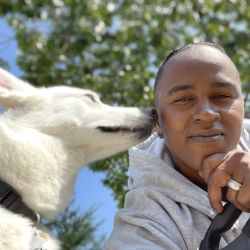Origins and Temperament
Greyhounds boast a storied past that harks back to ancient civilizations where they were prized for their unrivaled speed and hunting prowess. Revered by the Egyptians and featured extensively in ancient Greek and Roman mythology, these noble canines have transitioned into loving and serene household pets. Despite their athletic build, Greyhounds often embody a gentle and laid-back temperament. This tranquility, however, means they can be sensitive to stressful situations, such as travel, requiring handlers to be particularly attuned to their emotional well-being during transport.
Size and Physical Needs
Standing tall at 25 to 30 inches and weighing between 50 to 70 pounds, Greyhounds are the epitome of elegance and strength. Their slender, aerodynamic form allows for bursts of speed but also demands regular exercise to maintain peak physical condition. Travel accommodations should allow for enough space to stand, turn, and lie down comfortably. Due to their slim body fat percentage and short coat, Greyhounds often need additional warmth to maintain an ideal body temperature.
Common Health Considerations
Like many purebreds, Greyhounds are predisposed to certain health issues such as osteosarcoma, heart conditions, and sensitive skin. Before embarking on a journey, ensure that your Greyhound has an up-to-date health check, carries travel-friendly copies of health records, and packs any necessary medications. Practicing preventative measures and securing proper documentation can help ensure your Greyhound's journey is both safe and compliant with travel regulations.
















